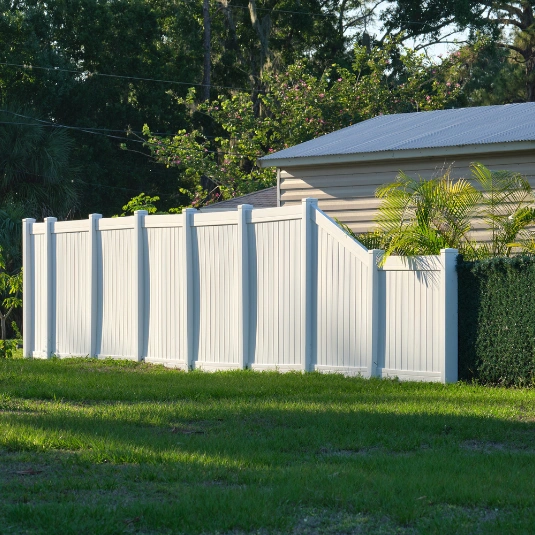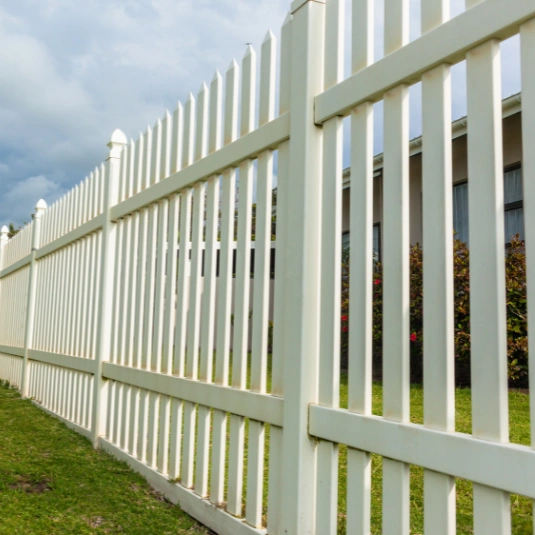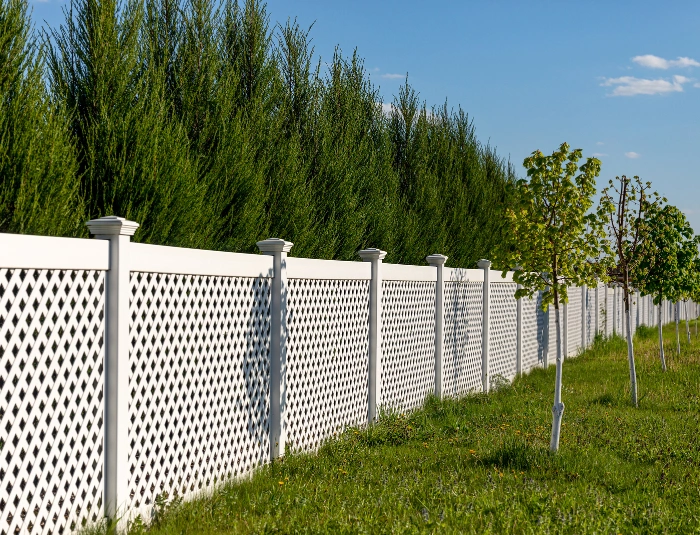No Dig Fence: The Ultimate Guide to Easy and Affordable Fencing Solutions
Discover everything you need to know about no dig fences, including types, benefits, installation, costs, and maintenance tips to find the best no dig fence for your property
Fencing plays a crucial role in defining property boundaries, providing security, and enhancing aesthetic appeal. However, traditional fencing methods often involve significant labor, time, and disruption to the landscape. Enter the no dig fence—a revolutionary solution that simplifies installation, reduces costs, and minimizes environmental impact. In this comprehensive guide, we’ll explore the benefits, types, installation process, and considerations for choosing a no dig fence for your property.
What is a No Dig Fence?
A no dig fence, as the name suggests, is a type of fencing that does not require digging deep post holes or setting posts in concrete. Instead, these fences are installed using a system of spikes or posts that are driven into the ground, often with a sledgehammer or a similar tool. This innovative approach makes the installation quicker, less invasive, and more adaptable to various terrains compared to traditional fencing methods.
How No Dig Fences Differ from Traditional Fences
Traditional fences typically require extensive preparation, including digging post holes, setting the posts in concrete, and ensuring the alignment is perfect. In contrast, no dig fences are designed for easier installation without heavy equipment or significant disruption to the landscape. This makes them an ideal choice for homeowners looking for a quick and effective fencing solution.
Types of No Dig Fences
There are several types of no dig fences available, each with unique characteristics and suitable applications:
Vinyl No Dig Fences
Vinyl no dig fences are popular for their durability, low maintenance, and aesthetic appeal. They come in various styles, including picket, privacy, and lattice designs. Vinyl fences are resistant to weathering, pests, and rot, making them a long-lasting choice for residential properties.
Metal No Dig Fences
Metal no dig fences, often made from aluminum or steel, offer a robust and secure option. They are ideal for areas requiring higher security or where a more durable fence is desired. These fences can be powder-coated to enhance their appearance and provide additional protection against the elements.
Wood No Dig Fences
Wood no dig fences provide a natural and classic look, perfect for traditional or rustic settings. They are typically lighter and easier to handle than full-sized wooden fences. However, they may require more maintenance to prevent rot and decay over time.
Composite No Dig Fences
Composite no dig fences combine the best features of wood and plastic, offering durability, low maintenance, and environmental friendliness. These fences are resistant to rot, insects, and fading, making them a great choice for eco-conscious homeowners.
Advantages of No Dig Fences
No dig fences offer several benefits that make them an attractive option for many property owners:
Ease of Installation
One of the most significant advantages of no dig fences is their ease of installation. Without the need for digging or setting posts in concrete, these fences can be installed much faster than traditional fences, saving time and labor costs.
Cost-Effectiveness
Since no heavy equipment or extensive labor is required, no dig fences are often more affordable to install. The reduced installation time also translates to lower costs.
Flexibility and Versatility
No dig fences can be installed on various terrains, including slopes and uneven ground, without the need for special tools or techniques. This flexibility makes them suitable for a wide range of applications.
Minimal Ground Disturbance
Unlike traditional fences that require digging and concrete setting, no dig fences cause minimal disruption to the ground. This is particularly beneficial in areas with underground utilities or where preserving the landscape is a priority.


Disadvantages of No Dig Fences
While no dig fences have many benefits, there are also some disadvantages to consider:
Limitations on Height
No dig fences are generally not as tall as traditional fences, which may limit their use in areas where higher fencing is required for privacy or security.
Durability Concerns
Depending on the material used, no dig fences may not be as durable or stable as fences set in concrete. For high-traffic areas or locations exposed to strong winds, additional support may be needed.
Less Stability Compared to Traditional Fences
The stability of a no dig fence can be less than that of a traditionally installed fence, particularly in soft or sandy soils where the ground may not hold the spikes as securely.
Installation Process of No Dig Fences
Installing a no dig fence is a relatively straightforward process that can often be completed in a single day:
Step-by-Step Guide to Installing a No Dig Fence
- Plan Your Layout: Measure the area to be fenced and mark the locations for posts.
- Drive the Stakes or Spikes: Use a sledgehammer or mallet to drive the fence stakes or spikes into the ground at the marked locations.
- Attach Fence Panels: Connect the fence panels to the stakes or posts, following the manufacturer’s instructions.
- Ensure Proper Alignment: Check the alignment and make any necessary adjustments to ensure the fence is straight and level.
- Secure the Panels: Tighten any screws or bolts to secure the panels in place.
Required Tools and Materials
- Sledgehammer or mallet
- Measuring tape
- Level
- Fence panels and stakes or spikes
- Screws or bolts
No Dig Fence for Different Property Types
No dig fences are suitable for various property types, offering different benefits depending on the application:
Residential Applications
For residential properties, no dig fences provide an easy and affordable way to define boundaries, enhance privacy, and improve security without the hassle of traditional fencing methods.
Commercial Applications
In commercial settings, no dig fences can offer quick and temporary fencing solutions that are easy to install and remove as needed. They are ideal for construction sites, event venues, and other commercial properties requiring flexible fencing options.
Industrial Applications
No dig fences are also suitable for industrial applications where temporary or semi-permanent barriers are needed. They provide a cost-effective solution for defining areas, protecting equipment, and maintaining security.
Comparing No Dig Fences to Traditional Fences
When deciding between a no dig fence and a traditional fence, consider the following differences:
Differences in Installation
No dig fences are quicker and easier to install, with no need for digging or concrete. Traditional fences require more preparation, labor, and equipment.
Cost and Maintenance
No dig fences are generally more cost-effective due to reduced installation costs and minimal maintenance requirements. Traditional fences may require more upkeep, especially if made from materials like wood.
Cost of No Dig Fences
The cost of a no dig fence can vary depending on the material, design, and installation complexity. On average, vinyl and composite no dig fences are more affordable than metal or wood options. Factors affecting costs include:
- Material type and quality
- Length and height of the fence
- Installation complexity
Maintenance of No Dig Fences
No dig fences require minimal maintenance compared to traditional fences. Regular cleaning with soap and water, occasional inspections for damage, and repairs as needed will help keep your fence looking great and functioning properly.
Design Options for No Dig Fences
No dig fences come in a variety of styles and colors to suit different aesthetic preferences:
Aesthetic Choices
From classic picket designs to modern privacy styles, there are numerous options to complement your property’s architecture and landscaping.
Color Options
Many no dig fences are available in various colors, including white, black, brown, and green, to match your exterior decor.
Environmental Impact of No Dig Fences
No dig fences are an eco-friendly choice for several reasons:
- Reduced Ground Disturbance: Minimal disruption to the soil and landscape helps preserve the environment.
- Sustainable Materials: Many no dig fences are made from recycled or sustainable materials, reducing environmental impact.
Legal Considerations and Permits
Before installing a no dig fence, it’s essential to check local regulations and obtain any necessary permits. Some areas have specific rules regarding fence height, placement, and materials, so it’s important to comply with all local ordinances.
Common Myths about No Dig Fences
Despite their growing popularity, several misconceptions about no dig fences persist:
-
Myth: No dig fences are not sturdy.
Fact: When properly installed, no dig fences can be just as secure as traditional fences, especially for residential and light commercial applications. -
Myth: No dig fences are only for temporary use.
Fact: While they are easy to install and remove, no dig fences can also provide a permanent fencing solution, especially with materials like vinyl and metal.
Popular Brands and Manufacturers
Several leading brands offer high-quality no dig fencing solutions, including:
- Zippity Outdoor Products: Known for their range of vinyl and metal no dig fence kits.
- WamBam Fence: Offers durable vinyl no dig fences that are easy to install.
- Xpanse Elite: Provides a variety of styles and materials, including composite options.
No Dig Fence Trends in 2024
In 2024, the trend in no dig fencing is moving towards greater customization, eco-friendliness, and the integration of smart technology. Homeowners are increasingly looking for fencing solutions that are not only functional but also enhance the overall appearance of their properties.
Frequently Asked Questions (FAQs)
- Can a no dig fence provide the same security as a traditional fence?
Yes, depending on the material and installation method, no dig fences can offer comparable security to traditional fences. -
How long does a no dig fence last?
The lifespan of a no dig fence depends on the material used. Vinyl and metal no dig fences can last 20 years or more with proper maintenance. -
Is it possible to install a no dig fence on a slope?
Yes, no dig fences are flexible and can be installed on various terrains, including slopes and uneven ground. -
Do I need a permit to install a no dig fence?
Permit requirements vary by location, so it’s essential to check with your local government or homeowners’ association. -
Are no dig fences more affordable than traditional fences?
In general, no dig fences are more cost-effective due to reduced installation costs and minimal maintenance requirements. -
What materials are best for no dig fences?
The best material depends on your needs and preferences. Vinyl is popular for its durability and low maintenance, while metal offers added security.
Conclusion
No dig fences provide a versatile, cost-effective, and environmentally friendly option for property owners looking to enhance their security and aesthetic appeal without the hassle of traditional fencing methods. With various materials, styles, and installation options available, there’s a no dig fence solution to suit every need. Whether for residential, commercial, or industrial applications, no dig fences are a smart choice for modern property owners.


1 Comment
[…] powered electric fences offer an eco-friendly, cost-effective, and reliable solution for managing livestock and securing property. With easy […]